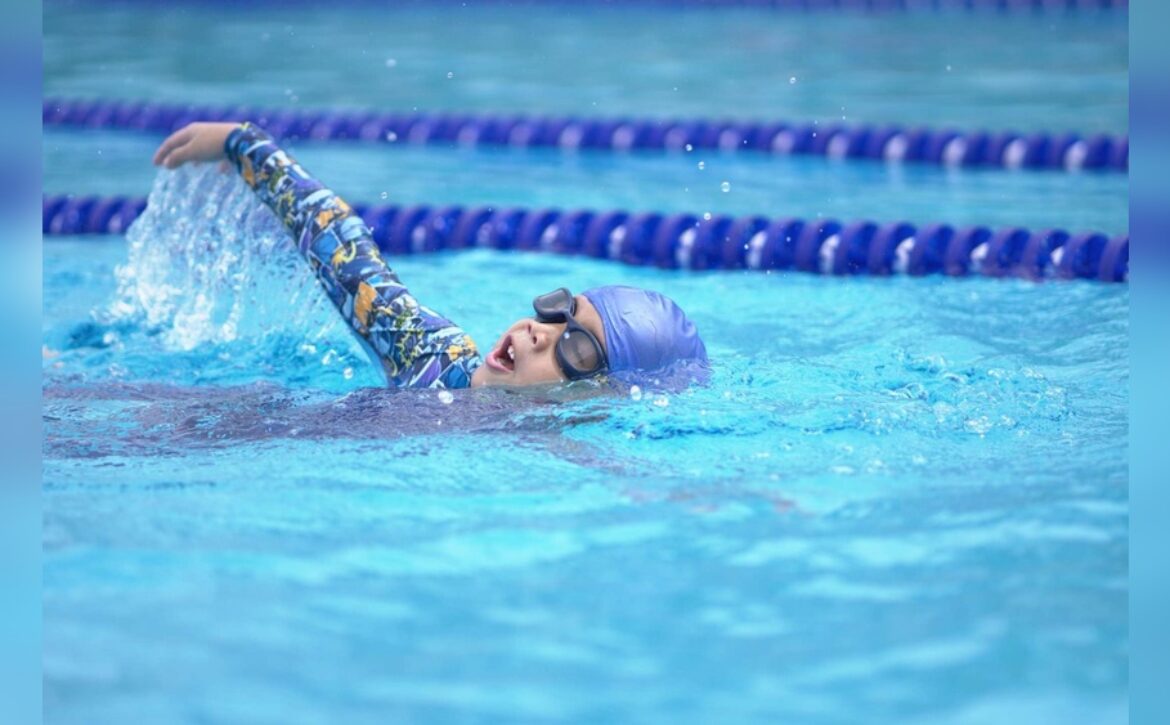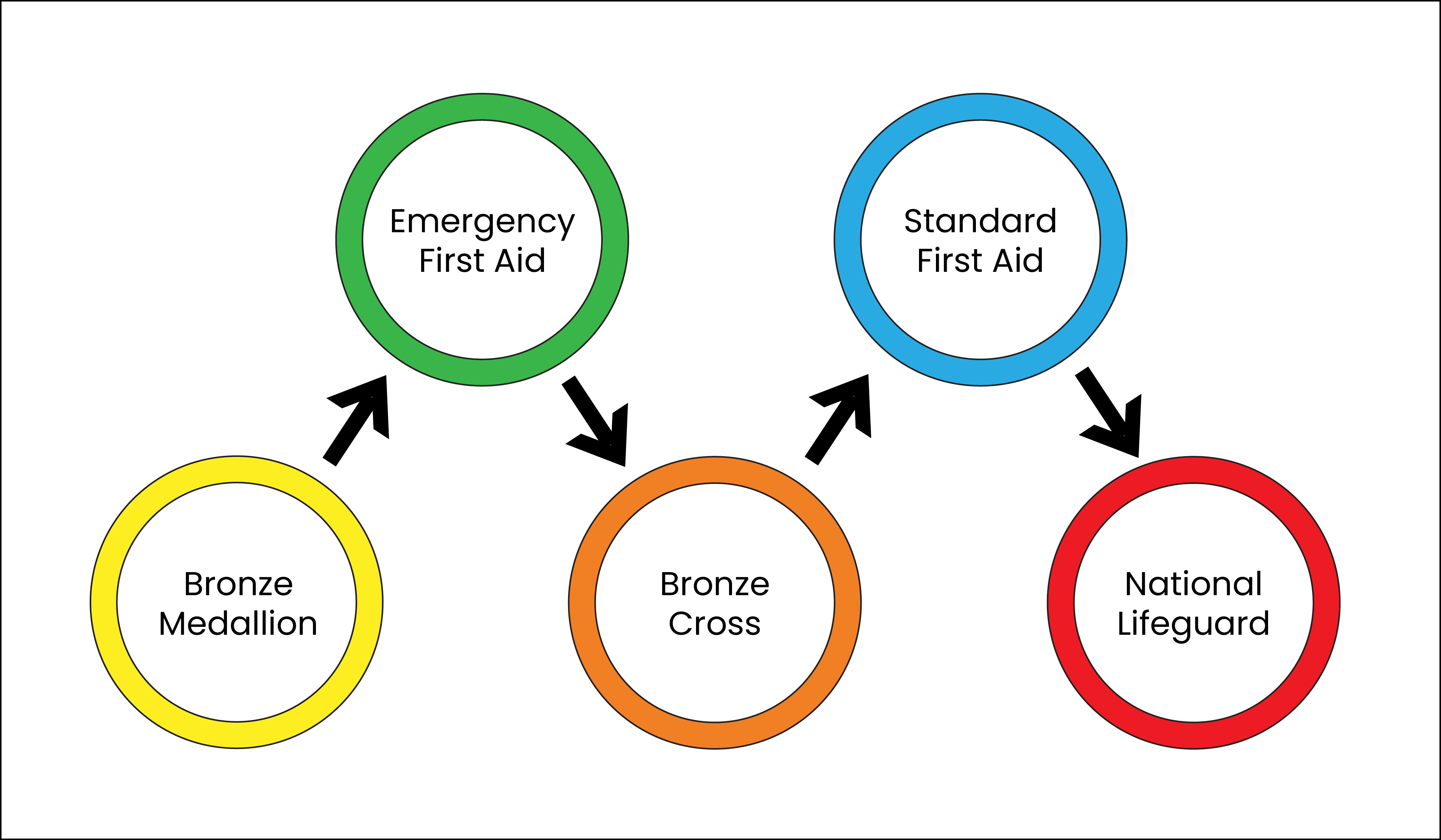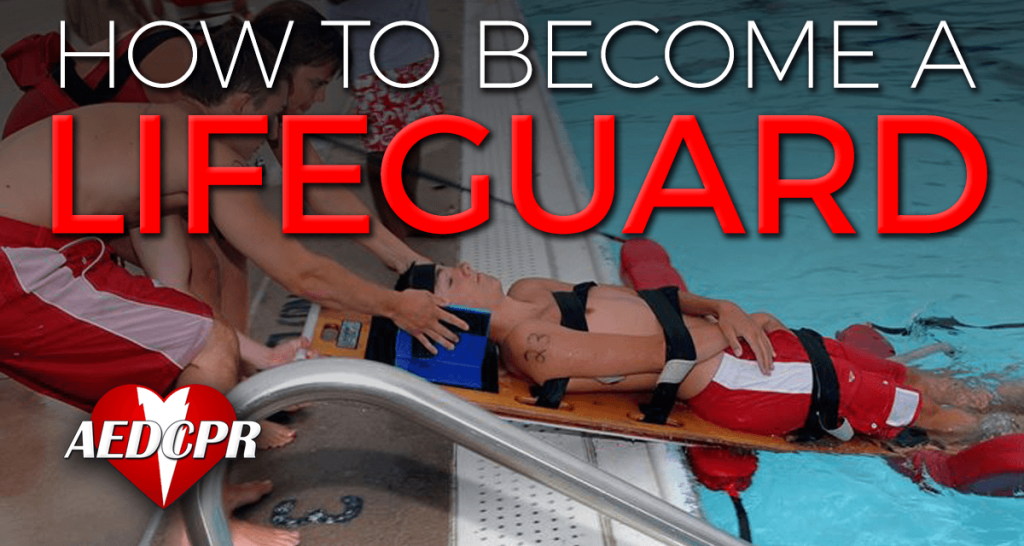
How to Become a Lifeguard: Step-by-Step Guide
Imagine standing by the pool, the sun warming your skin, and knowing that you have the skills to keep everyone safe. Becoming a lifeguard is not just about wearing a whistle around your neck; it’s about responsibility, quick thinking, and the rewarding feeling of being a hero in everyday life.
If you’ve ever thought about diving into this role, you’re in the right place. This guide will walk you through each step you need to take to become a lifeguard, from training to certification. You’ll learn what it takes to make split-second decisions and how you can develop the confidence to handle any situation.
Ready to dive into the details and discover how you can make a real difference? Let’s get started!

Lifeguard Role And Responsibilities
Becoming a lifeguard is more than just watching over swimmers. It involves a deep sense of responsibility and readiness to act in emergencies. Lifeguards are vital for ensuring the safety of swimmers at pools, beaches, and water parks. They need to be vigilant, quick thinkers, and excellent communicators.
Lifeguard Duties
Lifeguards monitor swimming areas to prevent accidents. They enforce safety rules and educate visitors about swimming safety. Their presence helps create a safe environment for everyone.
Emergency Response
Lifeguards are trained to respond quickly in emergencies. They perform rescues, administer first aid, and call for additional help if needed. Their quick actions can save lives.
Preventative Measures
Prevention is key for lifeguards. They identify potential hazards and take steps to minimize risks. This includes checking equipment and ensuring the safety of the swimming area.
Communication Skills
Effective communication is crucial for lifeguards. They must relay important information to swimmers and work well with team members. Clear communication helps maintain order and safety.
Physical Fitness
Lifeguards need to be physically fit. They must swim efficiently and handle physical tasks like lifting or towing. Regular fitness training is essential to maintain their abilities.

Prerequisites For Lifeguard Training
Becoming a lifeguard is a rewarding journey that requires commitment and preparation. Before you dive into lifeguard training, there are important prerequisites you need to meet. These essentials set the foundation for your success and ensure you’re ready to tackle the challenges of this vital role.
Age Requirements
Age is more than just a number when it comes to lifeguard training. You must typically be at least 15 years old to enroll in a lifeguard course. This age requirement is in place because lifeguarding demands a certain level of maturity and responsibility.
Think about it: can you handle the pressure of watching over swimmers and making quick decisions in emergency situations? Lifeguarding is not just a summer job; it’s a serious commitment to safety and protection.
Meeting the age requirement is your first step into a world of responsibility. It’s an opportunity to prove that you’re ready to make a difference.
Physical Fitness Standards
Physical fitness is a cornerstone of effective lifeguarding. Training programs often require candidates to pass a swim test and demonstrate endurance and strength.
Can you swim 300 yards without stopping? This test isn’t just about swimming laps. It assesses your ability to handle water currents and maintain energy during rescues.
Physical fitness also includes running and lifting. You might need to sprint on the beach or pull someone from the water. Strength and agility are essential.
Consider setting personal fitness goals before applying. Joining a swim club or hitting the gym regularly can prepare you for the rigorous demands of lifeguard training.
Are you ready to embrace the challenge and push your limits? Meeting these fitness standards ensures you’re equipped to save lives.
Preparing for lifeguard training is not just about meeting requirements; it’s about building confidence and capability. Are you ready to take the plunge?
Choosing The Right Lifeguard Course
Choosing the right lifeguard course is a pivotal step in your journey to becoming a lifeguard. The course you choose can shape your skills and confidence in handling emergencies. Finding the perfect course involves understanding the types of certifications available and identifying accredited training providers. Let’s dive into these aspects to help you make an informed decision.
Types Of Lifeguard Certifications
Different certifications cater to varied environments and responsibilities. Are you looking to guard a pool, a beachfront, or perhaps a water park? Each setting demands specific skills. Pool lifeguard certifications focus on quick rescue techniques, while beachfront certifications emphasize dealing with strong currents and tides.
Consider what type of lifeguard you aspire to be. Do you want to specialize in a particular area, or do you prefer a general certification? It’s crucial to align your interests with the certification type. Ask yourself: where do I see myself working, and what environment excites me the most?
Accredited Training Providers
Choosing an accredited training provider ensures you receive quality education and recognition. Look for providers endorsed by reputable organizations like the American Red Cross or the YMCA. These organizations set high standards, ensuring you are well-prepared for real-life scenarios.
Accreditation means that the training provider meets industry standards and provides reliable certification. It’s important to check reviews and ratings. Have previous trainees found success? Are the instructors experienced and knowledgeable? Your future as a lifeguard depends significantly on the quality of training you receive.
Taking the time to research and choose the right course can be the difference between feeling prepared and feeling overwhelmed. Your dedication now will reflect in your capabilities and confidence later. Are you ready to take the plunge and choose a course that aligns with your aspirations?
Skills Learned In Lifeguard Training
Lifeguard training teaches essential skills such as water rescue techniques, CPR, and first aid. Trainees learn to identify hazards, respond quickly, and maintain pool safety. Strong communication and teamwork skills are developed to effectively manage emergencies.
Becoming a lifeguard is more than just donning a red swimsuit and sitting atop a tall chair. It involves acquiring a unique set of skills that are crucial for ensuring safety at pools and beaches. Lifeguard training equips you with abilities that are not only essential for saving lives but also valuable in everyday situations. Whether you’re diving into water rescue techniques or mastering first aid, you’ll gain confidence and competence that can be applied beyond the poolside. Imagine the pride you’ll feel knowing you can make a difference in emergencies.
Water Rescue Techniques
Lifeguard training begins with mastering water rescue techniques. You’ll learn how to approach a distressed swimmer, secure them safely, and bring them back to shore. These skills are taught through hands-on practice in various water conditions. You’ll get comfortable with the unpredictability of waves and currents. Ever wondered how lifeguards can spot a swimmer in trouble amidst a crowded pool? You’ll develop keen observation skills and learn to trust your instincts.
First Aid And Cpr
First aid and CPR are vital components of lifeguard training. You’ll learn to respond to emergencies swiftly and efficiently. From treating minor cuts to performing life-saving CPR, these skills ensure you’re prepared for any situation. Imagine the confidence boost knowing you can assist someone who has fainted or is choking. These skills aren’t just for emergencies—they empower you to be a calm and competent helper in any setting.
Surveillance And Prevention
Surveillance and prevention are about anticipating problems before they occur. You’ll learn to maintain constant vigilance, scanning the water for potential hazards and risky behaviors. How do lifeguards balance watching the crowd and staying alert to emergencies? You’ll practice techniques to keep your focus sharp and your responses quick. Prevention is key, and you’ll gain strategies to educate swimmers about safety and reduce incidents. Your role as a lifeguard isn’t just reactive; it’s proactive, ensuring everyone enjoys the water safely. What skill do you think would be most challenging to learn? Or perhaps, which one do you feel most excited about mastering? Lifeguard training is a journey of growth and responsibility, preparing you to be a guardian of the waters.
Passing The Lifeguard Certification Exam
Becoming a lifeguard involves passing a certification exam that tests skills like swimming and rescue techniques. Practicing CPR and first aid is essential for success. This process ensures lifeguards are well-prepared for emergencies.
Becoming a lifeguard is a rewarding journey that requires dedication and skill. To officially take on this vital role, you must pass the lifeguard certification exam. This involves both written and practical components designed to ensure you’re fully prepared to handle emergencies. Let’s explore how you can effectively prepare for both parts of this exam.
Written Test Preparation
Start by familiarizing yourself with the exam content. The written test typically covers water safety, rescue techniques, and first aid, among other topics. Use study guides and online resources to deepen your understanding. Create a study schedule that allows you to review each topic thoroughly. Breaking it down into manageable chunks can reduce overwhelm and improve retention. Consider forming a study group with fellow trainees to exchange knowledge and quiz each other. Practice questions are your best friend. They help you get comfortable with the format and identify areas that need more focus. Remember, understanding why an answer is correct is just as important as knowing the answer itself.
Practical Skills Assessment
The practical exam tests your ability to perform lifeguard duties in real-life scenarios. You’ll need to demonstrate proficiency in water rescues, CPR, and using lifeguard equipment. This hands-on test is where your training truly comes to life. Regular practice is crucial. Spend time honing your swimming and rescue skills at a local pool or beach. If possible, practice in different conditions to build confidence and adaptability. Receive feedback from experienced lifeguards or instructors. Constructive criticism can pinpoint areas for improvement and boost your performance. Remember, even seasoned lifeguards started where you are now—practice and perseverance are your allies. Are you ready to rise to the challenge and become a certified lifeguard? Preparing for the exam is a test of commitment, but the skills you gain will equip you to save lives and make a difference.
Job Search And Application Process
Embarking on a journey to become a lifeguard involves strategic planning. The job search and application process demand attention to detail and preparedness. Securing a lifeguard position requires crafting a compelling resume and acing interviews. Let’s explore how to make your application stand out.
Resume And Cover Letter Tips
Your resume must highlight relevant skills and certifications. Mention lifeguard certifications prominently. Include experience in water safety or emergency response. Use bullet points for clarity and conciseness. Tailor your cover letter to each job application. Address the specific needs of the hiring organization. Express your passion for water safety and helping others. Keep your cover letter concise and focused.
Interview Preparation
Interviews for lifeguard positions focus on practical skills and personality. Prepare to discuss your experience in water safety. Practice answering questions about emergency scenarios. Be ready to demonstrate your swimming skills if required. Research common interview questions for lifeguards. Showcase your ability to remain calm under pressure. Practice speaking clearly and confidently. Dress professionally and arrive early for your interview.
Maintaining Lifeguard Certification
Becoming a lifeguard involves training in water safety, rescue techniques, and CPR. Lifeguards must maintain certification through regular practice and renewal courses. Staying updated on the latest skills is crucial for ensuring beach and pool safety.
Maintaining lifeguard certification is crucial for ensuring safety. It requires dedication and continuous learning. Lifeguards must keep their skills sharp to handle emergencies effectively. Let’s dive into the steps needed to maintain your certification.
Continuing Education Requirements
Lifeguards should enroll in classes regularly. These classes help refresh knowledge and skills. Learning about new rescue techniques is vital. Updates on safety protocols are often included. Attending workshops can be beneficial too. They provide hands-on experience. Many local organizations offer these educational sessions. Online courses are available for convenience. Staying informed is key to effective lifeguarding.
Recertification Process
Recertification is necessary every few years. It ensures lifeguards are up-to-date with current practices. The process involves both written and practical exams. Reviewing the latest guidelines helps with preparation. Practicing CPR and rescue techniques is essential. Schedule your exams ahead of time. This helps avoid last-minute rushes. Check specific requirements with your certifying agency. Each agency may have different criteria. Preparing well ensures a smooth recertification.

Frequently Asked Questions
What Qualifications Do I Need To Be A Lifeguard?
To become a lifeguard, you typically need a high school diploma and strong swimming skills. Certification in CPR, first aid, and lifeguard training is also required. Courses are offered by organizations like the Red Cross. These programs teach rescue techniques, emergency response, and surveillance skills essential for lifeguarding.
How Long Does Lifeguard Training Take?
Lifeguard training usually takes about 20 to 30 hours to complete. The duration depends on the certifying organization and course structure. Training includes both theoretical and practical sessions. Topics covered include water rescue techniques, CPR, and first aid. Completing a training program qualifies you for lifeguard certification.
What Skills Are Important For A Lifeguard?
Key skills for a lifeguard include strong swimming abilities and excellent observation skills. Lifeguards must have quick decision-making capabilities and effective communication skills. They should be able to perform first aid and CPR. Physical fitness and the ability to remain calm under pressure are also crucial for ensuring water safety.
How Often Do Lifeguards Need Recertification?
Lifeguards typically need recertification every two years. This ensures their skills and knowledge remain up-to-date. Recertification courses review CPR, first aid, and rescue techniques. It’s important to stay current with changes in safety protocols. Regular recertification helps maintain a high standard of safety and preparedness.
Conclusion
Becoming a lifeguard is a rewarding journey. Start by gaining strong swimming skills. Certification is crucial. It ensures you are ready for emergencies. Training programs teach you lifesaving techniques. Practice regularly to stay fit and alert. Seek opportunities for real-world experience.
Volunteering can help. Stay updated with the latest safety protocols. This keeps your skills sharp. Remember, being a lifeguard is about saving lives. Your commitment makes beaches and pools safer for everyone. So, dive into this career with passion and dedication.
You’ll make a difference every day.





